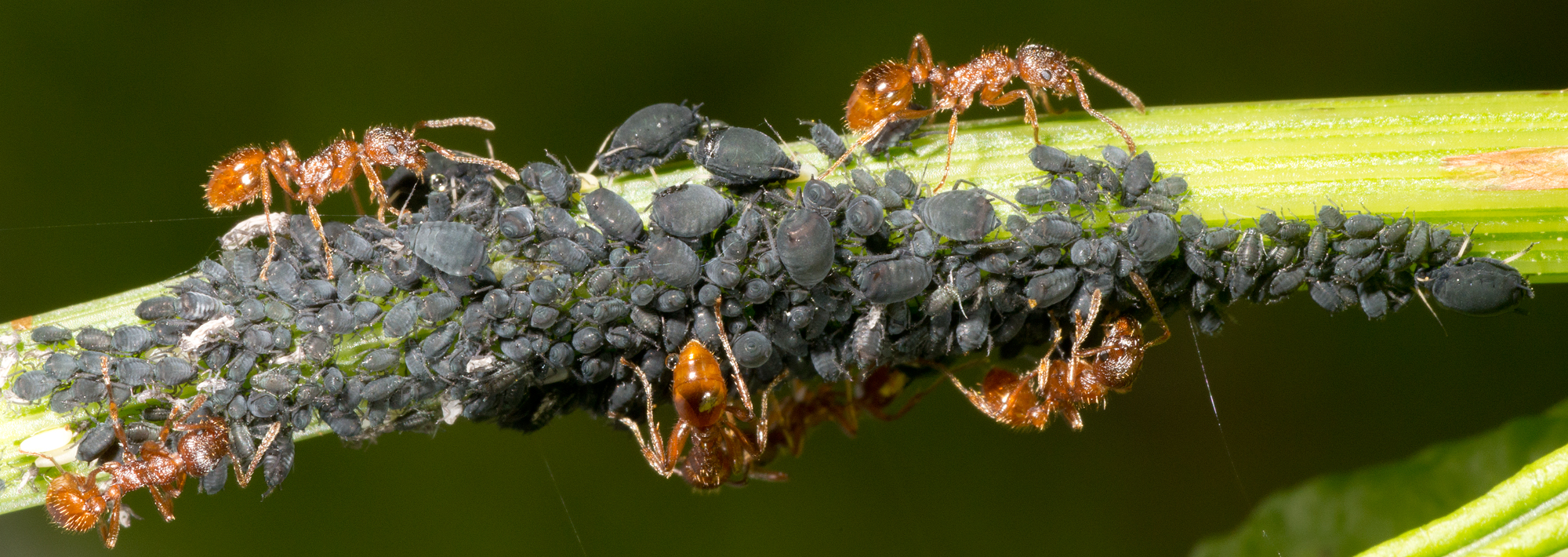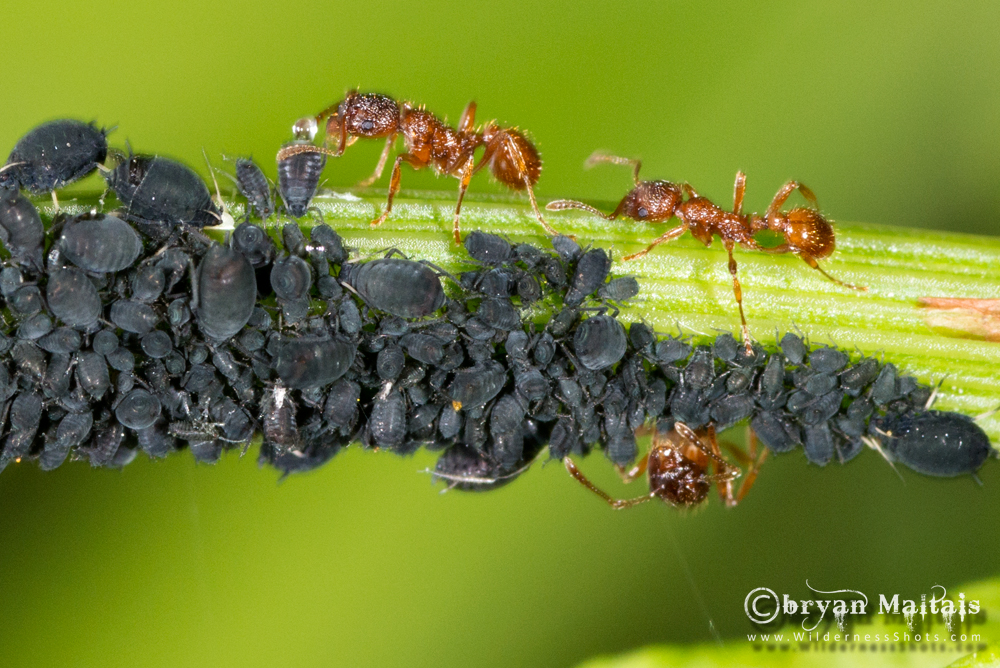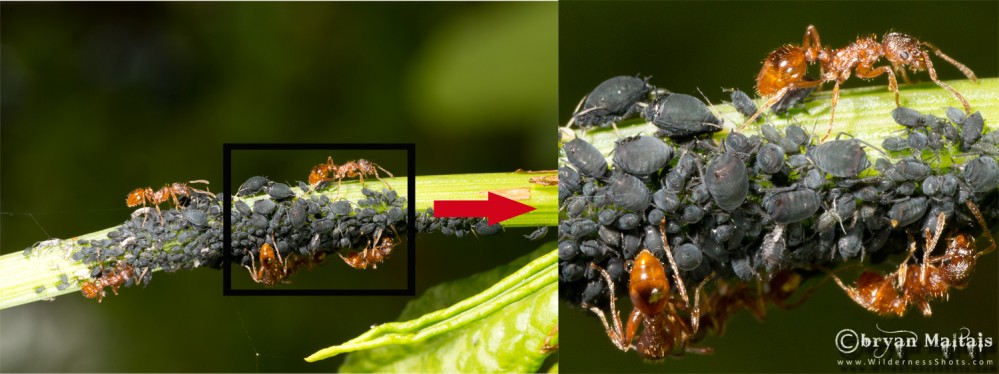

Aphid-Herding Ants defend their herd of aphids, which they “milk” for succulent honeydew, the waste liquid produced by aphids as they suck liquid from the host plant.
When I photograph landscapes, it’s usually a mad dash through the mountains to arrive in time for good light. In that case, I forfeit the small things along the way for the big shot. But when photographing in a forest, it’s a slow, deliberate crawl where I scrutinize every blade of grass and search beneath every log for interesting life to photograph. In a forest it might take me an hour to move only 100 ft. This type of “biological” macro photography is what drew me into photography. It’s therapeutic because of the high level of concentration needed.
On a recent trip to Germany, a plant caught my eye that seemed to have an odd and scaly discolored area. Upon closer inspection, it was a colony of aphids. But I soon noticed ants scurrying about, and knew that I had discovered Aphid-herding Ants. Ants and aphids have a mutualistic relationship, whereby the aphids feed the ants, and the ants protect the aphids. Aphids suck the glucose-rich liquid from their host plant. Although the liquid is sugar-rich, it’s poor in other nutrients, so the aphids must extract a lot of liquid to get fed. As a result, they excrete a sugary waste liquid called honeydew, which the ants feed on. The ants stimulate the release of honeydew by tapping on the aphids with their antennae. This is called milking.
The Ants tend to their Aphid herd quite fastidiously. When the aphids have depleted the host plant of nutrients, the Aphid-herding Ants move them to a new host. Some Ants even care for the aphids over winter, transporting aphid eggs inside the ant colony and rearing them until it’s warm enough to move them outside again. The ants aggressively defend their Aphid herd against parasites and predators such as Ladybugs.
Photography Technique
Nikon D800
Nikon 105mm Lens (non-image stabilized)
Nikon R1 Dual Macro Flash Units
f/22, 1/100 sec, ISO 800
Under perfect conditions this would have been a tripod mounted shot, but the plant was swaying in the breeze, which necessitated hand holding in order to constantly reposition with the motion of the plant. Hand holding presented an array of challenges, which had to be dealt with through manual settings. I used an aperture of f/22 to achieve maximum depth of field because at this close distance, even f/22 yielded only about 2mm of the subject in focus. I used a fairly high 800 ISO to be able to use f/22 with a reasonably fast shutter speed. I could have used a much higher ISO to achieve a faster Shutter Speed, but I didn’t want the added noise, which would be too noticeable when cropping the final image. f/22 dictated a shutter speed of only 1/100th sec. 1/100th sec properly exposed the background using ambient light, but was also the absolute minimum allowable shutter speed when hand-holding a 105mm lens to avoid camera blur (shutter speed must be ≥ focal length) . But even 1/100th sec could not completely avoid camera blur at this extremely close distance, so I set my flash to Rear Sync. Rear Sync fires the flash at the end of the exposure. This allows the 1/100th sec shutter speed to expose the scene using natural light, and then the flash fires to freeze the action at the last instance. If I had used only the flash to expose the scene, I would have gotten tack sharp ants, but a dark, underexposed background. If I would have used non Rear Sync flash, the flash would have fired first, freezing the subject and making it tack sharp, but then photo would have become blurry as the shutter continued to remain open for another 1/100th sec.


Dear Bryan,
Your photos are very nice.
I need a few images on symbiosis in nature to use on a page in my website. The ants and aphids are very suitable for this.
May I have your permission? I can acknowledge you on the website for your photo.
Regards
Masih
Yes Masih, feel free to use them on your website, thanks for including a link.